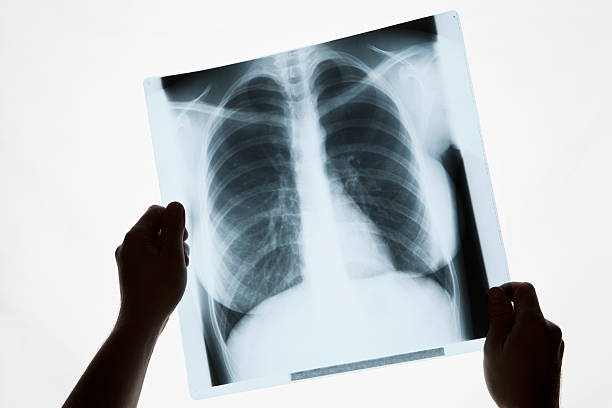In Nigeria, lower respiratory infections are an important cause of morbidity and mortality among children under five years.
The disease burden is particularly heavy in rural areas due to poor environmental conditions and lack of access to adequate health care services.
In addition, there is little published data on Nigeria’s epidemiology and burden of Lower respiratory infections (LRI).
Nonetheless, this article will explain Nigeria’s three common lower respiratory infections and their symptoms and treatment.
The three common lower respiratory infections in Nigeria are Pneumonia, Bronchitis, and Bronchiolitis.
1. Pneumonia
Pneumonia is an infection of the lung tissue, and is said to be the most common lower respiratory tract infection globally.
According to UNICEF, In Nigeria, 19% of child mortality were caused by pneumonia in 2018, and it was the biggest killer of children under-five in 2017.
The primary symptoms are shortness of breath, fever, and chest pain. Other symptoms may include coughing, chills, and fatigue.
In many cases, the illness is caused by a virus or bacteria that can spread person-to-person through droplets in the air or contaminated surfaces.
In general, pneumonia is an infection of the lungs. It can be bacterial or viral, caused by several different bacteria, viruses, and fungi.
Pneumonia is found in rural and urban areas and is one of the common lower respiratory infections among children.
Symptoms:
- A cough that produces phlegm
- Coughing up blood (hemoptysis)
- Shortness of breath or difficulty breathing
- Fever
- Tiredness and exhaustion
- Breathing difficulties – you may feel like you’re struggling to breathe out, taking short breaths, or making noises when you breathe out (wheezing).
Treatment:
The treatment of pneumonia is based on the specific cause. Some antibiotics are used to treat bacterial pneumonia, while other drugs are used if the cause is fungal or viral.
- A breathing tube to help you breathe if you have severe symptoms or if your condition gets worse
- Intravenous (IV) fluids to help rehydrate you, if you are dehydrated
- If your condition is very serious or complicated, you may need other treatments such as oxygen therapy, a ventilator (breathing machine), or surgery.
Precaution: Keep children away from cold and do not expose or use air conditioning in their room.
2. Bronchitis
Bronchitis is a lung infection that causes inflammation in the airways and mucus production.
The main symptoms are a cough, which can be dry or produce mucus, and shortness of breath.
Bronchitis is caused by a couple of factors that include:
- Cigarette smoking (the most common cause)
- Achest infection (such as pneumonia)
- Inhaling smoke from fires or wood stoves or other environmental pollutants such as dust or fumes
- Exposure to cold air (for example, if you have a chest infection and go out in the cold)
Bronchitis is a common lower respiratory illness. It causes inflammation of your airways, making it difficult to breathe. A viral infection usually causes bronchitis. A virus can get into your respiratory tract through your mouth, nose, or other body parts, such as the intestines or genitals.
Symptoms:
- A cough that produces mucus (sputum)
- A scratchy feeling in your throat when you swallow
- Chest pain when breathing deeply or coughing — this may be worse at night
- A high-temperature fever
- Wheezing (a whistling sound when you breathe)
Treatment:
- Medications: Antibiotics are often prescribed for bacterial bronchitis. Antibiotics work best if you begin taking them within a day or two after your symptoms start. If you have viral bronchitis, antibiotics aren’t effective and won’t help your symptoms. Some other medications that may be used to treat bronchitis include:
- Nasal steroids and decongestants to relieve nasal congestion and stuffiness
- Steroids (prednisone or hydrocortisone) to reduce inflammation in the lungs (bronchospasm)
- Antihistamines (Benadryl, Chlor-Trimeton), which can help relieve runny nose and congestion
Precaution: Keep children away from smoke or any form of air pollutants. Children should never be placed in the care of an adult smoking. They should be kept away from the cold.
3. Bronchiolitis
Bronchiolitis is an inflammation of the smallest airways in the lung (the bronchi). It is one of the most prevalent lower respiratory tract infections in Nigeria.
The condition is most common in infants and young children.
Bronchiolitis differs from other types of bronchitis caused by infections such as the flu. The infection that causes bronchiolitis is often a virus, but a bacterial infection can also cause it.
There are two types of bronchiolitis: viral and bacterial. Bacterial bronchiolitis develops when bacteria infect the lungs. Viral bronchiolitis usually causes mild symptoms than bacterial bronchiolitis; It can be severe in some cases.
Symptoms:
The symptoms of bronchiolitis usually appear within 2–4 days after exposure to the virus. They include:
- Dribbling at the mouth or nose
- Coughing that may produce green or yellow phlegm
- Wheezing (a whistling sound when you breathe)
- Rapid breathing — more than 60 breaths per minute — that may be hard to control
- Difficulty breathing, especially during sleep (obstructive sleep apnoea)
- Trouble sleeping, irritability, and fatigue for the child
Treatment
Treatment options vary depending on how severe your child’s bronchiolitis is. Most children will recover without treatment, but severe cases may require hospitalization.
Most babies with bronchiolitis will get better without treatment within three to five days. The goal of treatment is to relieve symptoms so your baby can rest and eat more easily. Treatments include:
- Staying hydrated: Encourage your baby to drink fluids throughout the day, including water, fruit juice, and milk. Check with your doctor before giving your baby any new food or medicine while he has bronchiolitis because some could make him sicker.
- Using humidifiers: A cool mist humidifier may help loosen mucus in your baby’s chest if he has trouble coughing up thick phlegm on his own. This can be especially helpful at night when he needs the extra moisture in his airways to breathe easier while sleeping.
Precaution: Keep children away from dirty environments, dust, smoke, and cold.
Conclusion
Ensure you consult the doctor immediately when you notice any child displaying one or more of the symptoms listed above. The earlier it is diagnosed, the faster it can be treated. When lower respiratory infections are left untreated for a while, they may become dangerous and cause a terminal illness.
ALSO READ:
- 5 Common Rainy Season Diseases In Nigeria
- 5 Common Parasitic Infections in Nigeria
- 5 Common Diseases in Nigeria and How to Prevent Them
- 6 Common Zoonotic Diseases in Nigeria
- 5 Common Silent Killer Diseases In Nigeria
- 5 Common Paediatric Emergencies in Nigeria
- 6 Prevalent Fungal Diseases In Nigeria
- Nigerian Child Vaccination Schedule 2022
- 5 Vaccine-Preventable Diseases In Nigeria
Collins Nwokolo is a human physiologist, writer and health enthusiast. He loves writing helpful articles on health and fitness, which he enjoys sharing with everyone.










